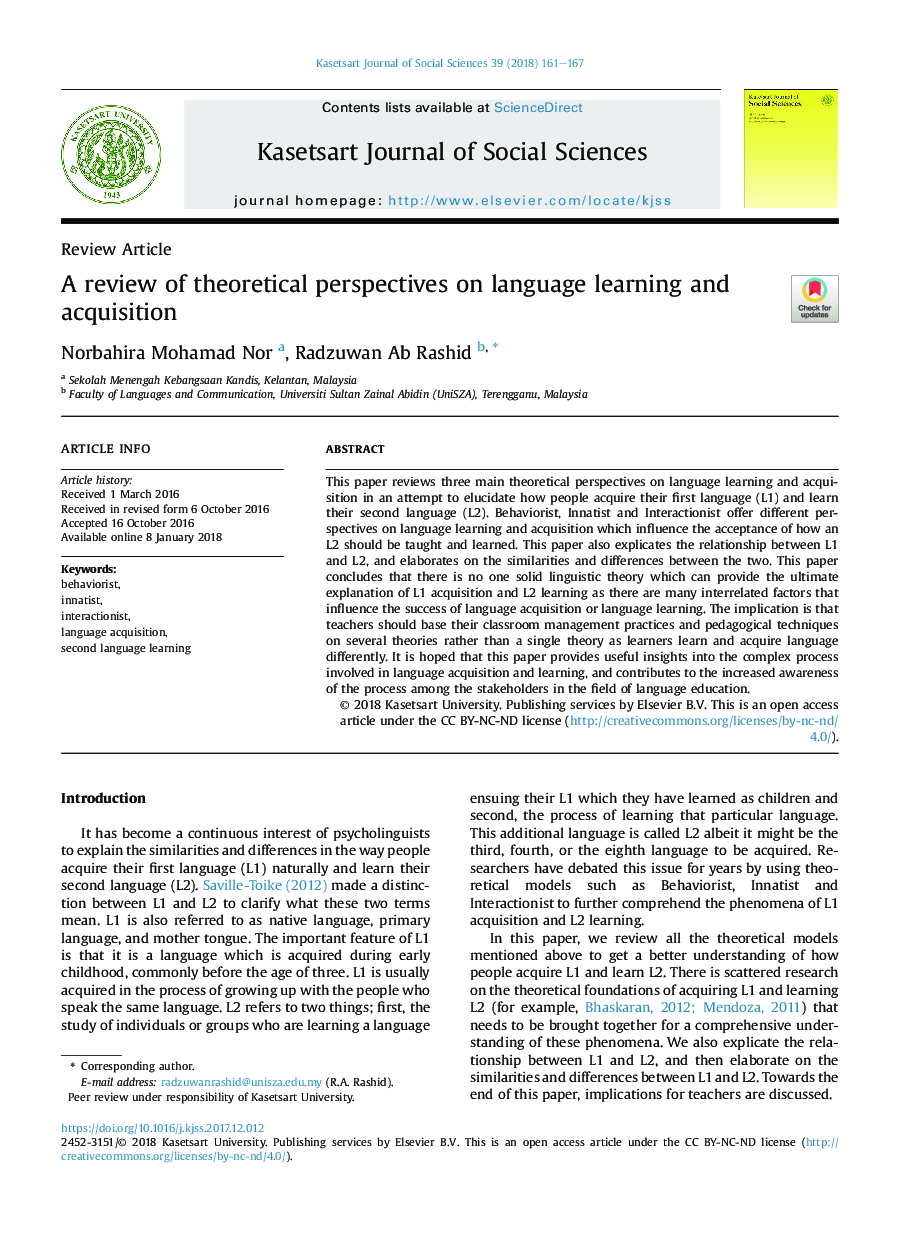| Article ID | Journal | Published Year | Pages | File Type |
|---|---|---|---|---|
| 6843994 | Kasetsart Journal of Social Sciences | 2018 | 7 Pages |
Abstract
This paper reviews three main theoretical perspectives on language learning and acquisition in an attempt to elucidate how people acquire their first language (L1) and learn their second language (L2). Behaviorist, Innatist and Interactionist offer different perspectives on language learning and acquisition which influence the acceptance of how an L2 should be taught and learned. This paper also explicates the relationship between L1 and L2, and elaborates on the similarities and differences between the two. This paper concludes that there is no one solid linguistic theory which can provide the ultimate explanation of L1 acquisition and L2 learning as there are many interrelated factors that influence the success of language acquisition or language learning. The implication is that teachers should base their classroom management practices and pedagogical techniques on several theories rather than a single theory as learners learn and acquire language differently. It is hoped that this paper provides useful insights into the complex process involved in language acquisition and learning, and contributes to the increased awareness of the process among the stakeholders in the field of language education.
Related Topics
Social Sciences and Humanities
Economics, Econometrics and Finance
Economics, Econometrics and Finance (General)
Authors
Norbahira Mohamad Nor, Radzuwan Ab Rashid,
